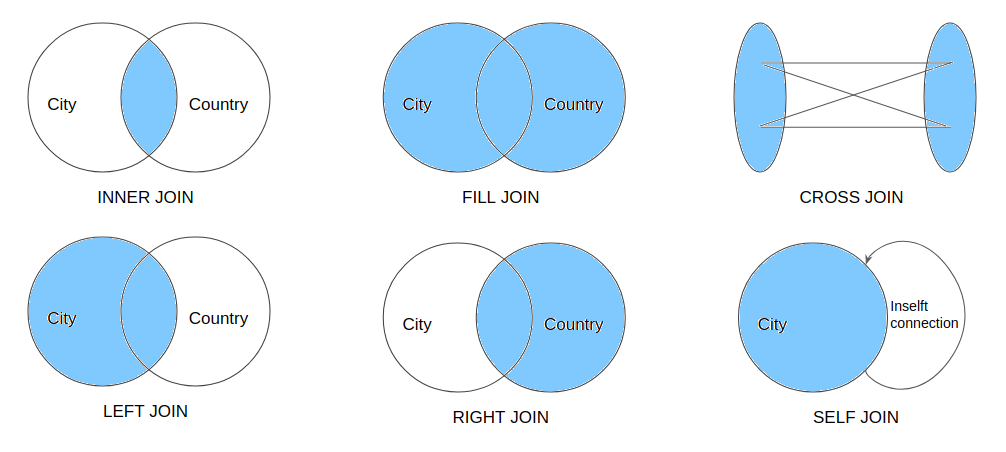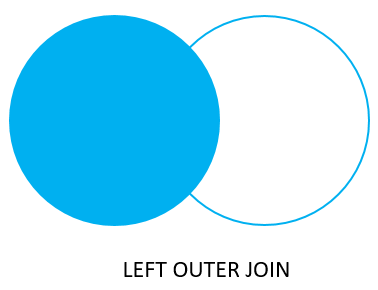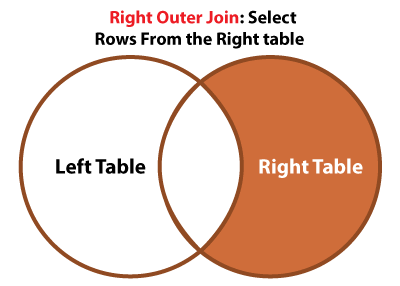
The RIGHT JOIN or the RIGHT OUTER JOIN returns all the records from the right table and also those records which satisfy a condition from the left table. SELECT Employee.EmpFname, Employee.EmpLname, Projects.ProjectID, Projects.ProjectNameįind out our MS SQL Course in Top Cities India Syntax: SELECT Table1.Column1,Table1.Column2,Table2.Column1. Also, for the records having no matching values in the right table, the output or the result-set will contain the NULL values. The LEFT JOIN or the LEFT OUTER JOIN returns all the records from the left table and also those records which satisfy a condition from the right table. SELECT Employee.EmpFname, Employee.EmpLname, Projects.ProjectID ON Table1.MatchingColumnName = Table2.MatchingColumnName Example:

#Postgresql left inner join full#
INNER JOIN Projects ON Employee.EmpID=Projects.EmpID įull Join or the Full Outer Join returns all those records which either have a match in the left(Table1) or the right(Table2) table.

SELECT Employee.EmpID, Employee.EmpFname, Employee.EmpLname, Projects.ProjectID, Projects.ProjectName NOTE: You can either use the keyword INNER JOIN or JOIN to perform this operation. ON Table1.MatchingColumnName = Table2.MatchingColumnName So, if you perform an INNER join operation between the Employee table and the Projects table, all the tuples which have matching values in both the tables will be given as output. This type of join returns those records which have matching values in both tables.
#Postgresql left inner join how to#
For your better understanding of this concept, I will be considering the following three tables to show you how to perform the Join operations on such tables. There are mainly four types of joins that you need to understand. How many types of Joins are there in SQL? Now, that you know what joins mean, let us next learn the different types of joins. There are predominantly used when a user is trying to extract data from tables which have one-to-many or many-to-many relationships between them. JOINS in SQL are commands which are used to combine rows from two or more tables, based on a related column between those tables. Most Common Questions asked about Joins.How many types of Joins are there in SQL?.The following topics will be covered in this article In this article on SQL Joins, I will discuss the various types of Joins used in SQL. It provides us with various features such as Triggers, Injection, Hosting and, Joins is just one of the most important concept to master in SQL. If it's not for some reason to do with SQL's deeper architecture, I'd like to understand why.Structured Query Language aka SQL is the core of relational databases with the help of which we can handle data. This feels like a more correct & less wasteful way to do it. In the past I've done operations like this by doing two SELECTS, one of which is against the item_templates table, the other against the unique_items table, and taken their UNION. Or if this is something you can't do conceptually - have each row choose its own join - I'd love to get a link to a deeper explanation. If there's a quick fix for the syntax, I'd love to hear it.

This is the sort of thing I've been trying, without success: SELECT item_table, item_id, *

So when I find a record of an item in the item_instances table, I want to look up more information about it, and I need to pull that info from the correct table. They are now stored in the unique_items table. Say I've got a table of item_instances in my game, of all the items in the game world, and some of the items are cookie-cutter copies of generic items from the item_templates table, and other items started off as templates, and then acquired unique properties as players used them. I'm attempting to use a CASE expression to select which table each row should be joined with.


 0 kommentar(er)
0 kommentar(er)
